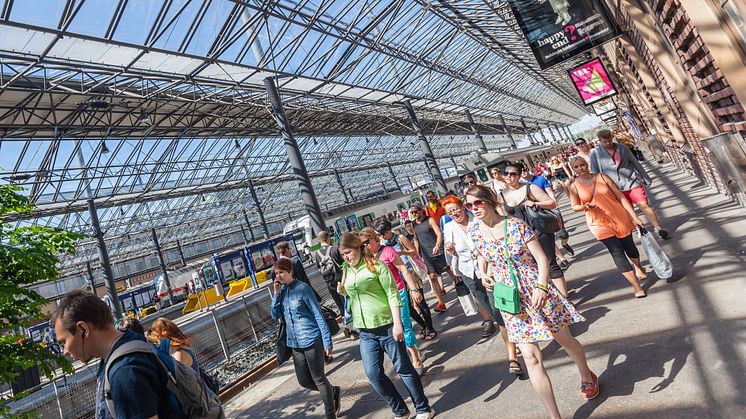
Blogginlägg -
Public transport needs a common language
Public transport organisations from Nordic cities recently met at the Nordic Public Transport Conference in Helsinki to discuss, among other things, how public transport can get better at providing services in real time. One of the speakers was Ulf Bjersing from Hogia Public Transport Systems, who maintained that greater use must be made of standards and open data if we are to provide attractive public transport in future:
Today's passengers want to be provided with real time information in order to quickly plan their journey from A to B, regardless of traffic disruptions or changes. This demand must be satisfied if public transport is to be an attractive transport mode in the future and have a chance of competing with cars.
Traffic systems are becoming increasingly complex with many suppliers involved. Meanwhile, technology is advancing at an increasingly fast pace, giving rise to new creative solutions for communicating with passengers. While key components such as technical control systems have a long lifespan and cannot be changed at short notice, there is rapid development in other areas towards an increasingly decentralised world where more parties are responsible for contributing different types of data.
How can we meet passengers' demands for consistent travel information supplied in real time when traffic systems are becoming ever larger and more complex?
We already have common languages today in the form of standards based on open architecture. If all players used them, this would make things easier for public transport clients as well as operators, thus resulting in lower costs. A streamlined exchange of information between different systems and operators would allow us to give passengers coordinated travel information regardless of their chosen operator. Systems with open architecture are easy to replace and integrate with existing systems, which would counteract the lock-in effect of older technical solutions.
The demand for mobility in our society is increasing, and in order for public transport to be a sustainable and realistic transport mode in future, suppliers must help to promote technical development that is as rapid in public transport as in other sectors. Hogia saw a need for open interfaces and open architecture early on, and has actively contributed to the development of Nordic and European standards. All players should use common languages to help the public transport sector apply new technology at the pace required by passengers.
Ulf Bjersing, Chief System Architect, Hogia Public Transport Systems
